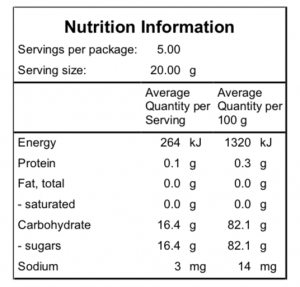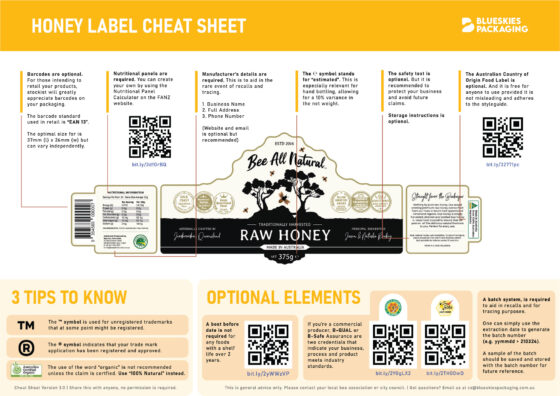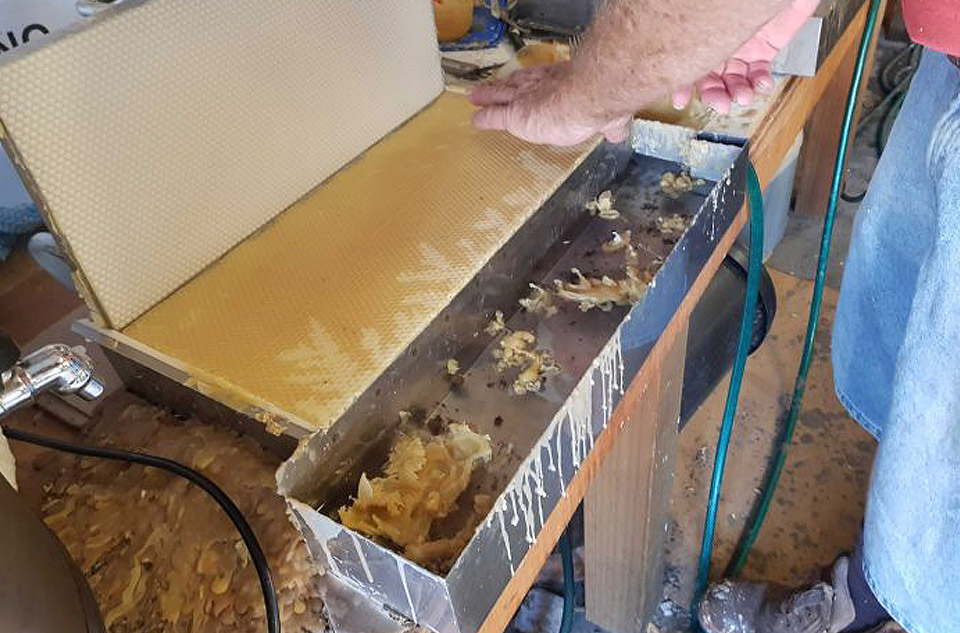Australian Honey Bee Industry Facts & Figures





Honey labelling laws are a mandatory requirement when selling honey. Doesn’t apply for honey sold at fund-raising events or given as gifts.
The Food Standards Code states the following must appear on a label
Link for labels online tool.

Link for kangaroo logo, bar chart and text label can be produced using an online tool.

Don’t forget safety seals.
Link to a printer that specializes in honey labels. Provides all the info you need to design your own labels.

Honey Label Cheat Sheet 3.1 (filesusr.com)

Australia’s honey bee industry remains the only one worldwide that does not have the destructive varroa mite, which has caused extensive colony losses in the US and Europe.
That means local apiarists do not need to use chemicals to deal with the parasitic pest, so their beeswax is pharmaceutical grade.
It is so sought after, particularly in Europe for cosmetics, that the price has climbed from around $5 per kilogram five years ago to $30.
One person who has noticed the price hike is Kirsty Hunter, co-founder of the Dead Man’s Beard Company based at Warracknabeal in regional Victoria, which uses the wax in its beard and moustache styling products.
“It’s definitely becoming incredibly expensive,” she said.
“We’ve been established for two years now and the price has almost doubled.”
Currently the company is absorbing the extra cost by making savings elsewhere, but Ms Hunter said she fears it will eventually have to pass on the higher prices to customers.
“Men’s grooming products are one of the first things that men will cut back on,” she said.
Another industry struggling to afford the increased cost is, ironically, the same industry that produces the beeswax.
While some beekeepers have been able to take advantage of the higher prices, many others, particularly those affected by drought, have suffered.
Beekeepers use wax for new honeycomb foundations.
It is a form of recycling, in which the wax bees produce is melted down and made into indented sheets, which are inserted into new hives.
Cairns beekeeper Maurie Damon is having trouble sourcing the beeswax needed to increase his production.
He said suppliers are prioritising exports to take advantage of premium profits.
“The price was around about $4.50 to $5/kg and now you’re looking at $20/kg, but it’s very difficult to get hold of it,” he said.
Source: www.abc.net.au